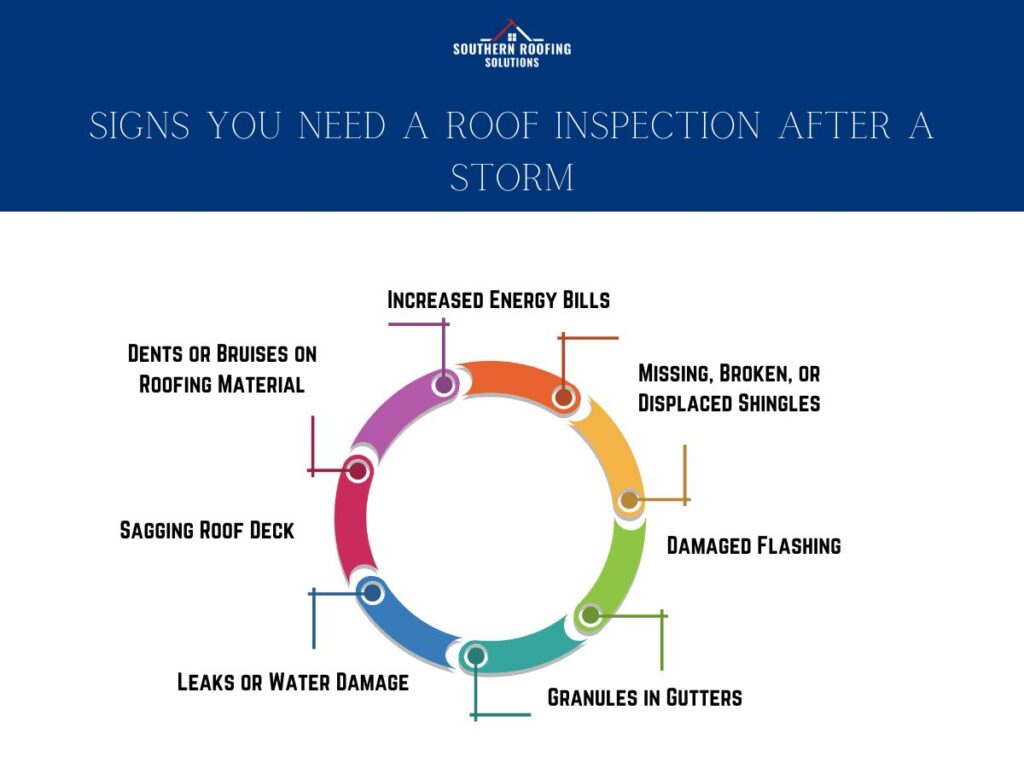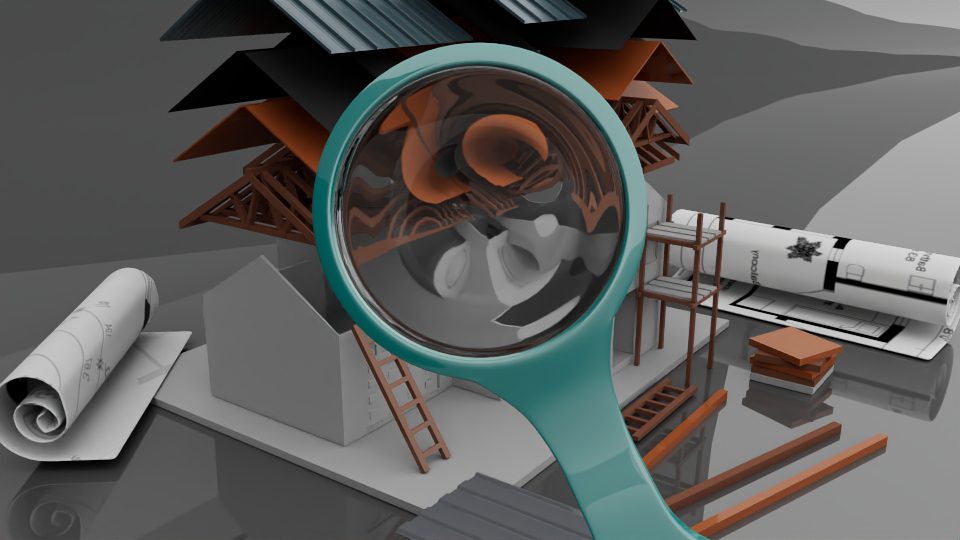Storms can bring powerful winds, heavy rainfall, hail, and even flying debris, which can potentially cause serious damage to your home's roof. While some storm damage may be immediately apparent, such as missing shingles or a visible leak, others may be more subtle and hard to detect without a professional inspection.
Ignoring these issues can lead to long-term structural problems and expensive repairs down the line. Below are some signs you may need a roof inspection after a storm. Let’s begin!

The onset of high winds and heavy hail in a storm can result in visible damage to the shingles on your roof. Shingles are designed to protect the roof's integrity, acting as a barrier against various weather conditions. When a storm sweeps through, it can cause shingles to go missing, break, or displace from their original position.
Noticing these changes is a clear indication that your roof requires an inspection. The threat lies in the immediate visual damage and the potential exposure of the underlayment and decking. Over time, the moisture can penetrate deeper, leading to leaks within the house.
Additionally, persistent moisture can encourage wood rot in the roof's wooden components and potentially foster mold growth. Wood rot and mold can compromise the roof's structural stability and pose health risks. It is paramount to seek professional help to inspect and repair your roof immediately after a storm.
Flashing is vital in a well-structured roofing system, sealing and safeguarding joints from potential water ingress. Typically made from durable materials such as galvanized steel or aluminum, flashing is strategically placed where the roof intersects with other structures, such as chimneys, skylights, and vents.
These intersections are often vulnerable points where water could seep in, but they are well protected with the correct flashing installation. However, under the onslaught of high winds and punishing hail that comes with storms, this flashing could become damaged or displaced.
Bent, broken, or missing flashing can compromise these critical junctures on the roof, rendering them susceptible to water intrusion. As a result, moisture could seep into the roof and house, causing potential leaks, mold growth, and structural damage.
The shingles design includes an integral layer of granules, which protect against UV rays and weathering effects. These granules provide a first line of defense, enhancing the durability of shingles and, ultimately, the roof's longevity.
However, these granules can be dislodged and stripped from the shingles during turbulent weather conditions, particularly storms with high winds or hail. As a result, homeowners may notice a significant accumulation of these granules in their gutters or downspouts.
While a small amount of granule loss is normal due to aging, a large quantity points to a significant degree of shingle damage, especially after a storm, this granule loss not only reduces the protective capabilities of the shingles, making them susceptible to accelerated wear and tear but also indicates a compromised roofing system.

The aftermath of a storm calls for a thorough inspection of your home, particularly the attic and interior ceilings, as these areas can be the first to exhibit signs of water intrusion. Indications of such water damage can range from visible water stains on ceilings and walls, peeling paint, and sagging drywall to subtle signs like a musty smell or persistent dampness.
Even minor leaks, which may seem inconsequential initially, have the potential to cause significant damage over time. They can serve as the breeding ground for mold, a serious concern given its potential health effects and its ability to spread rapidly throughout a structure.
Furthermore, consistent water intrusion can degrade the house's structural elements, compromising its stability and safety. Therefore, spotting any signs of water damage post-storm should be a trigger for immediate action - an urgent call to have your roof inspected by professionals.
Hailstorms are notorious for causing subtle yet significant damage to roofing materials. The forceful impact of hail can leave small dents or bruises on your shingles, often invisible from the ground. While these impairments might not cause immediate leaks or visible damage, they compromise the overall strength and integrity of the shingles.
Over time, the affected shingles can suffer from premature aging and failure as the bruised areas become points of weakness, making the shingles more susceptible to cracking, curling, or tearing. Consequently, these weakened shingles may not withstand subsequent storms, leading to the risk of leaks and increased damage.
Observing the physical structure of your roof can reveal critical information about its condition. If parts of your roof deck appear sagging or warped, this is often a telltale sign of underlying water damage and rot.
These irregularities in the roof's structure could suggest that water has infiltrated the roof's layers and has been persistently dampening the deck, leading to its deformation. Water damage of this magnitude can promote the development of rot in the roof's wooden elements, weakening them substantially over time.
This serious issue extends beyond aesthetic implications; it poses a risk to the home's structural integrity. Sagging or warped roof decks can lead to the roof's eventual collapse if not addressed promptly, posing significant safety risks.
A less obvious but important sign of a potential roofing problem can be found in your energy bills. If you notice a sudden and unexplained increase in your heating or cooling costs, it could indicate an issue with your roof.
Storm damage can cause breaches in your roof that affect the insulation and ventilation in your attic. When your roof's insulation is compromised, it reduces your home's ability to maintain its temperature effectively. As a result, your heating, ventilation, and air conditioning (HVAC) system will need to work harder and run longer to keep your home at a comfortable temperature, leading to increased energy consumption and higher bills.
Similarly, poor ventilation can trap hot air in the attic during summer, again forcing your air conditioning system to work overtime. Therefore, an unexpected rise in energy costs should prompt a thorough roof inspection.
Storms can wreak havoc on your roof, often causing damage that isn't immediately visible to the untrained eye. If you've experienced a storm and see any of the signs listed above, it's essential to schedule a professional roof inspection as soon as possible.
Regular inspections can identify issues early on, prevent more extensive damage, and save money on costly repairs. Remember, proactive care is always the best approach to maintaining the integrity and longevity of your roof.